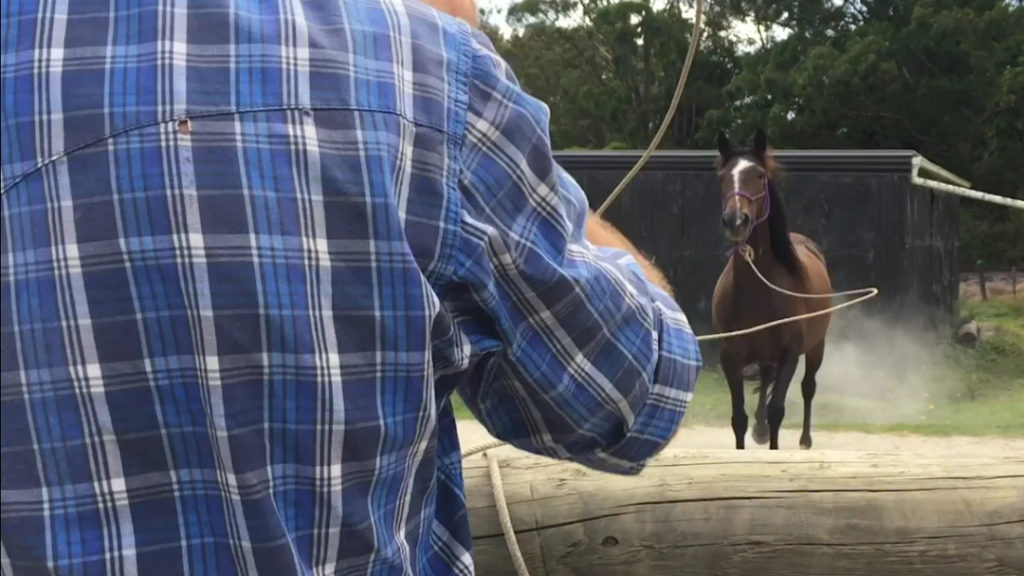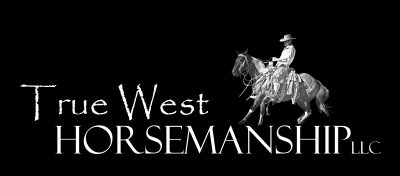Pulling back while tied is one of the more common habits some horses can develop. Initially, a horse pulls back because he doesn’t feel safe with his feet restricted and doesn’t know how to “give” to the halter to find the release. If he breaks whatever he’s tied to and finds he can gain freedom and the comfort of safety, pulling back can become a habit. The practice of tying to baling twine (which I’d never seen before coming to New Zealand) is a substitute for good training that can actually make a horse more dangerous to itself and its surroundings.
In order to re-train a horse that has developed this habit, one must teach him to be able to move his feet in response to pressure and be able to stay soft and responsive on the lead rope.
Many aspects of groundwork, including circles, disengaging the hindquarters, backing, and lateral shoulder movement like the side-pass and counter-arc, can be used to build this understanding in the horses mind. Basically, any time contact is made with the horses head through the lead rope, you want to look for him to “give” or come off the pressure. When he responds like this, it is crucial that you release the pressure you have on the rope. If your hands are “heavy” or slow to release, your horse will become “heavy” as well and may learn to throw his head up to get a release.
Before attempting the more involved maneuvers mentioned above, try to have your horse just stand and flex both directions laterally (to the side). Position yourself at the shoulder to discourage the horse from moving toward you. Pick up on the lead rope with your hand near the withers, similar to where your hand would be when you’re riding. Take the slack out of the rope slowly, offering the lightest feel he will respond to. Reward any progress, releasing the pressure, even if it’s only a slight bend initially. Your aim is to get his head around towards his shoulder and perpendicular to the ground. He may try to find the release by ducking or tossing his head, backing up or just tipping his nose in without bringing his head around. As he tries these, just stay with him and don’t release the pressure on the rope until you feel him give his head, even slightly.
Recognize and reward any try and then build on it. Let him straighten his neck out completely. Rub his neck and let him rest a moment before asking again. Once you get one side working better, try the other side.
This lateral flexion that doesn’t involve force will teach a horse to hunt for the slack in the lead rope and is foundational for good groundwork exercises, as well as work under saddle. As the horse becomes comfortable responding consistently to your cues for movement and softness, you are also preparing him to be tied up safely.
We have a video in our Online Video Library of working with a Pulling Back Rehabilitation Case…check it out with a FREE 7 Day Trial today by clicking here!


